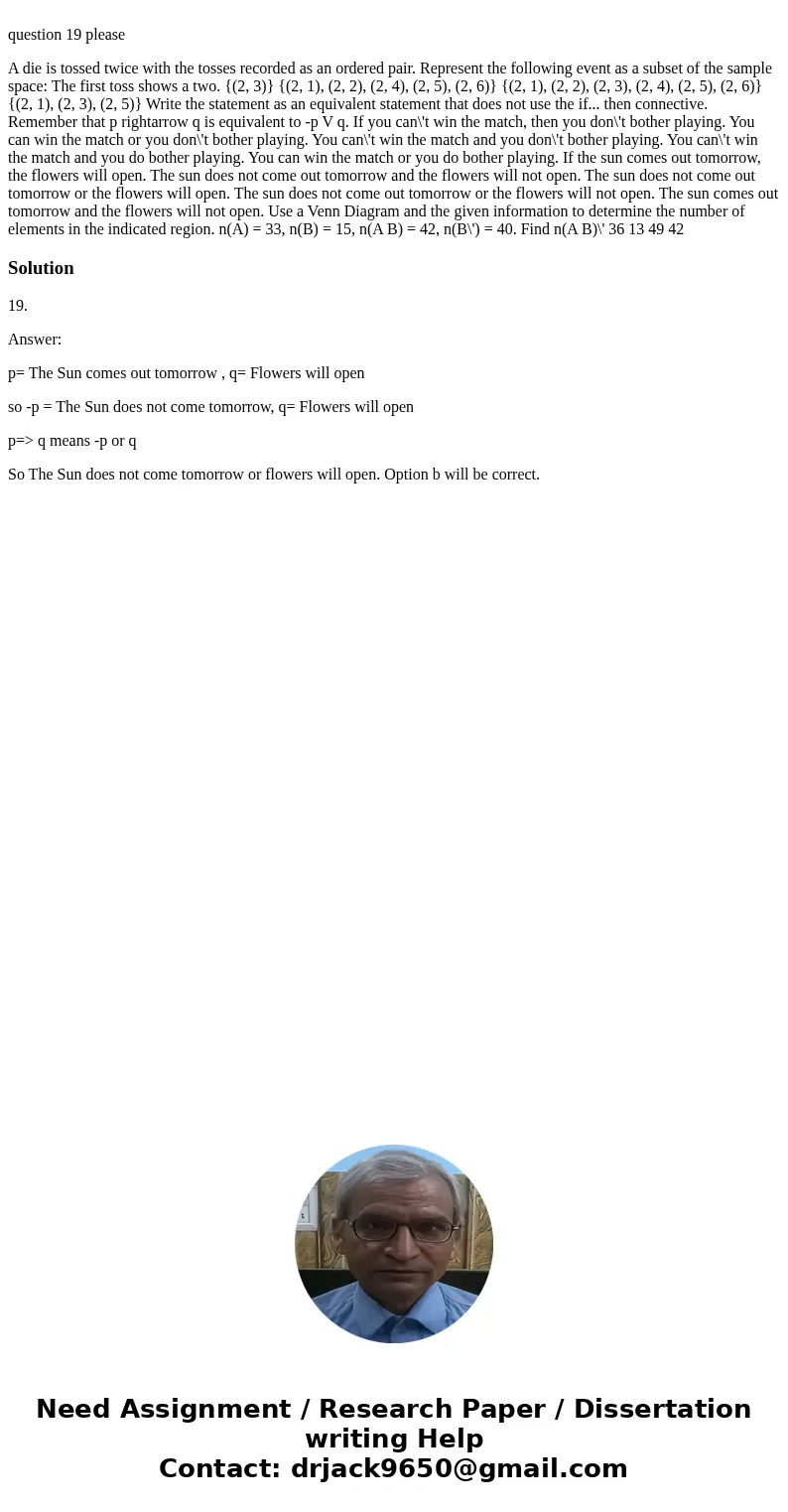question 19 please
A die is tossed twice with the tosses recorded as an ordered pair. Represent the following event as a subset of the sample space: The first toss shows a two. {(2, 3)} {(2, 1), (2, 2), (2, 4), (2, 5), (2, 6)} {(2, 1), (2, 2), (2, 3), (2, 4), (2, 5), (2, 6)} {(2, 1), (2, 3), (2, 5)} Write the statement as an equivalent statement that does not use the if... then connective. Remember that p rightarrow q is equivalent to -p V q. If you can\'t win the match, then you don\'t bother playing. You can win the match or you don\'t bother playing. You can\'t win the match and you don\'t bother playing. You can\'t win the match and you do bother playing. You can win the match or you do bother playing. If the sun comes out tomorrow, the flowers will open. The sun does not come out tomorrow and the flowers will not open. The sun does not come out tomorrow or the flowers will open. The sun does not come out tomorrow or the flowers will not open. The sun comes out tomorrow and the flowers will not open. Use a Venn Diagram and the given information to determine the number of elements in the indicated region. n(A) = 33, n(B) = 15, n(A B) = 42, n(B\') = 40. Find n(A B)\' 36 13 49 42
19.
Answer:
p= The Sun comes out tomorrow , q= Flowers will open
so -p = The Sun does not come tomorrow, q= Flowers will open
p=> q means -p or q
So The Sun does not come tomorrow or flowers will open. Option b will be correct.

 Homework Sourse
Homework Sourse